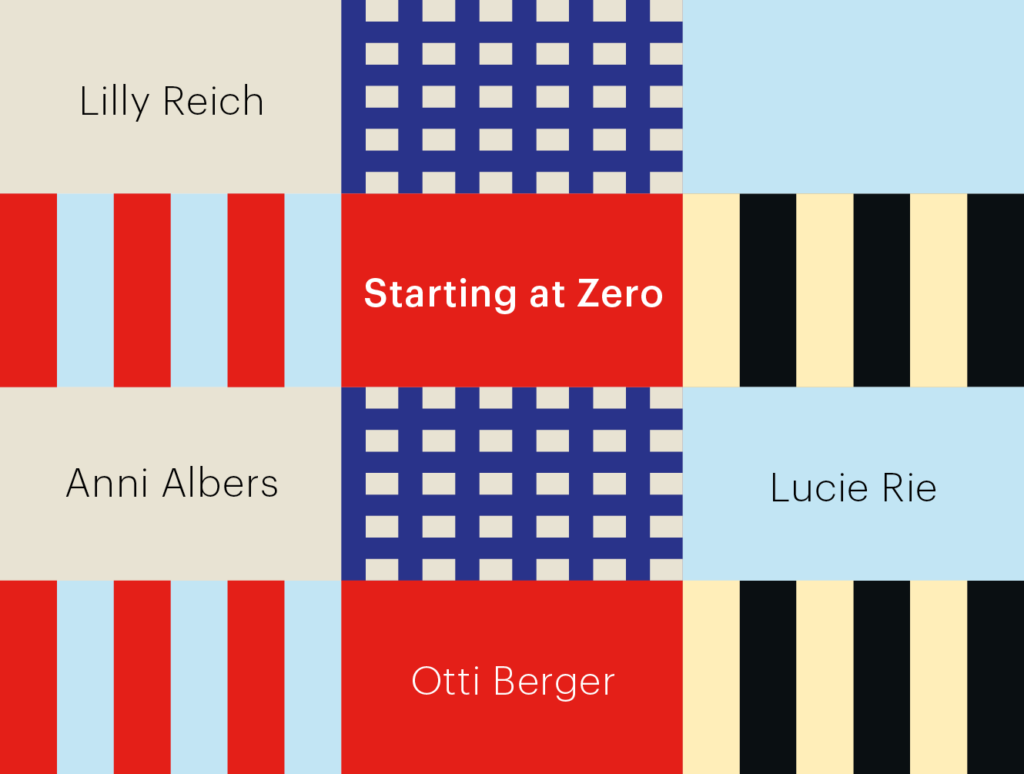
The exhibition “Starting at Zero” will for the first time focus on the difficult time these female avantgarde designers went through as they had to re-establish and reinvent themselves in the wake of Nazism in Europe in the 1930s–1940s. Their legacies are today beyond doubt among the most striking and enduring that ever came out of the 20th century.
Anni Albers and Otti Berger were contemporaries at Bauhaus, and good friends. The course was firmly rooted in the hand weaving tradition. But with the opening of the new Architecture department at Bauhaus in 1927 there was a shift in focus to industrially produced textiles more suited to the New Architecture (Neues Bauen).
In September 1930 Ludwig Mies van der Rohe became director of the Bauhaus in Dessau, and as of January 1932 Lilly Reich became the Master of the weaving and interior design department, asking Otti Berger to run the weaving courses. In 1928–1930 Reich worked with Mies van der Rohe on the interiors
of the Villa Tugendhat, and her significance for the planning of the interior is today beyond doubt.
Lucie Rie’s ceramics were amongst the finest that ever came out of the 20th century, and they have a great affinity to the works of Anni Albers, Otti Berger and Lilly Reich. In 1938 Rie had to flee from Austria to England but to survive she had to make ceramic and glass buttons. But there are also appraised ceramic vases and tableware from other periods of her rich creative career.
The exhibition will present a unique collection of artworks in the form of textiles, graphic prints and ceramics.
Exhibition opening: Wednesday 26 June 2024, 18:00
Exhibition: 27 June – 8 September 2024 (accessible without reservation for free Tue–Sun 10:00–18:00)
The exhibition is situated on the technical ground floor of Villa Tugendhat.
Curators: Dr. Widar Halén and Dr. Daniel Low-Beer
Curator of the Villa Tugendhat: Michal Kolář
Production: Světlana Ruggiero Kulíšková
Graphic design of the exhibition and the accompanying printed materials:
Studio PIXLE
Translation: Světlana Ruggiero Kulíšková, Petr Kalousek
Proofreading: Ivana Sára Sobotková
Thanks to: Daniel Low-Beer and the Grassi Museum for the loan of the exhibits
The exhibition is produced by the Arks Foundation in collaboration with the Study and Documentation Centre – Villa Tugendhat, the Brno City Museum and the Meeting Brno Festival.
